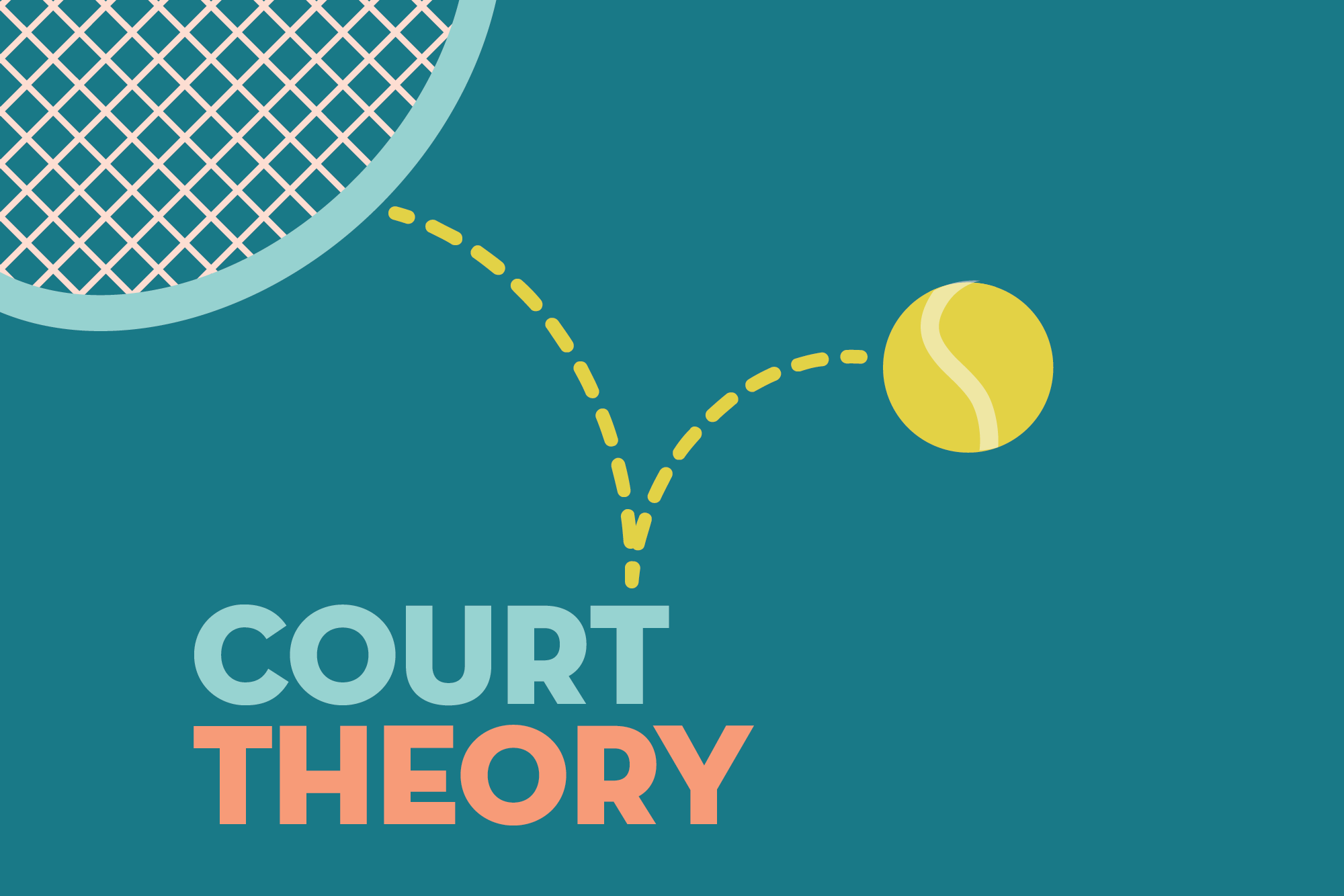Welcome to Court Theory, a boutique digital journalism venture dedicated to tennis culture from the pro tour to the public courts, built for players and fans obsessed with the sport. Let me tell you a little bit about Court Theory and how we got here.
Several years ago, a friend of mine tried to convince me to launch a show called “Allen’s Angry Tennis Podcast.” He assured me the name was just to get attention. But he noted that when I talked about tennis, it was with the energy of somebody who has a stake in every aspect of the sport.
He wasn’t wrong. On most tennis topics, I have strong feelings. Sure, sometimes it’s outrage. Most of the time, it’s total captivation. That’s how I’ve felt about tennis from the moment I was first introduced to it on tv by my grandmother in the 1980s. Since then, tennis has been a main staple in my life. And now, with the launch of Court Theory, I’ve made tennis my career.
For the last 15 years, I’ve been a journalist, mostly in the realm of politics and policy (and news, more broadly). For places like The Washington Post, Wired, and The Atlantic, I’ve covered national elections, Congress, the Pentagon, tech giants like Google, and a bunch of other topics too long to list. And, when I was afforded the opportunity, I wrote about tennis. In the back of my head, I kept wondering if I should trade in my politics beat for a tennis post. Then, I second-guessed myself: Would marrying my passion and my job kill my love of tennis? And what if the switch didn’t work out? Would it be a career-ending move? I let those questions rattle around in the back of my head for a few years too many.
So, why now? There are plenty of answers to this question. On a personal level and for a number of reasons, covering politics in this era just didn’t seem like a sustainable (nor satisfying) career any longer. As a practical matter, the opportunities to go it alone have dramatically expanded — the digital tools, the practical expertise, and the range of revenue streams all exist for a solo publisher to make a living.
But perhaps the biggest reason is that I saw a need. By and large, our tennis media is failing the sport and its fans. Executives at major media outlets — including one that is ostensibly dedicated to all things tennis — are struggling to focus long enough to deliver tennis fans what they want. An unhealthy fixation on metrics, the perpetuation of tired storyline tropes, and an insistence on following a select few players have all come at the severe disservice to how grand tennis is and how dedicated its fans are.
Too many outlets are falling all over themselves to present an antiseptic version of the sport that is contrary to observed and lived reality. And when that isn’t the case, digs at players come off as petty and mean rather than enlightening. All of it has come at a cost. Viewers, readers, and listeners know when they’re being sold a bill of goods, which has made it harder for existing and potential fans to connect with this beautiful sport.
Still, there are some shining stars that made me think Court Theory might be possible. Reporting from people like Reem Abulleil of The National, Tumaini Carayol of The Guardian, and Chris Clarey (formerly of The New York Times who has struck out on his own) showed me that people do, indeed, appreciate fact-based reporting. And, similarly, they value the standards that Mary Carillo has set for showing tennis fans not only what’s great about our sport, but also the ugly warts that need remedying — even if doing so has cost her more than one job.
In podcasting, The Tennis Podcast got there first (the proof is in the name) and set the standard for fusing reporting and commentary, while serving their super engaged audience. In the same space, The Body Serve became kings at insisting their listeners to think about context, especially along race and gender lines. And Jon Guerrica’s Fantastic Tennis podcast has incredible down-to-earth interviews with WTA players past and present, almost serving as a calm reminder that players are people, too.
Then, as if to put a spoke in the wheel that is the breakneck speed of tennis media on the internet, Racquet came along in 2016 to show that a brilliant, print-only publication could not only survive, but thrive. As it turns out, serving an audience that was hungry for slower, more thoughtful tennis journalism that honors its culture is just what tennis needed. What a revelation it was and continues to be.
And that’s where Court Theory comes in. With diligence and some luck, I will do my best to uphold so many of the standards these folks and others have set in place. For the most part, Court Theory is where we celebrate tennis — and there truly is so much to celebrate. But that celebration comes with the responsibility of confronting our weak spots, which are sometimes plain, flat-out failures.
So what can you expect from Court Theory? Each day there will be fresh writing here on the site that’s less about breaking news (although I hope to do some of that, too) and more about powerful stories and critical analysis. Each Monday, the Court Theory newsletter will go out, filled with original content that’s exclusive to the newsletter. And, a little later in the summer, the Court Theory podcast will launch, as well.
If you’d like to help Court Theory grow, I’ve got a handful of things you can do to make a big impact around here.
While this is supposed to be a “welcome” note, allow me a moment to also say thanks. Technically, Court Theory is a one person operation. At least for now, it is. But there is no doubt in my mind that without the help of a bunch of people, I would still be at the drawing board.
When I told Caitlin Thompson of Racquet about my half-baked idea for Court Theory, she enthusiastically came back with, “I totally think there's some serious there there!” And then she backed it up with insanely good advice that I’ve taken to heart, even if I haven’t been able to implement it all just yet.
Marc Faletti of Latchkey and Shay Totten of the American Press Institute separately spent hours with me talking about how to build something truly special, because they’ve each already done exactly that. Kedzie Teller, storyteller extraordinaire, got me started on the right foot in thinking about how to truly connect with tennis fans on social media; his energy, his joyousness, and his constant reminder to always, always be yourself are all a treasure. My USTA league Fearhands teammates and our captain Will Metz checked in on me as I built Court Theory and gave good cheer at some particularly difficult moments.
Brigid Barrett, my partner in all things, designed and built this beautiful site and all other design things Court Theory. She did it with love and care — and with the dose of pragmatism I so clearly need.
And thank you, dear reader. I’m grateful you’re here so early on, and I just know that together we’ll make Court Theory a special place.







Comments